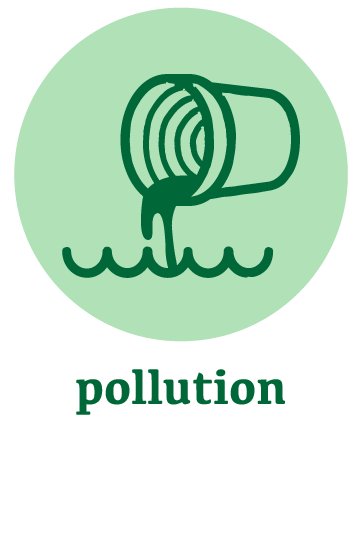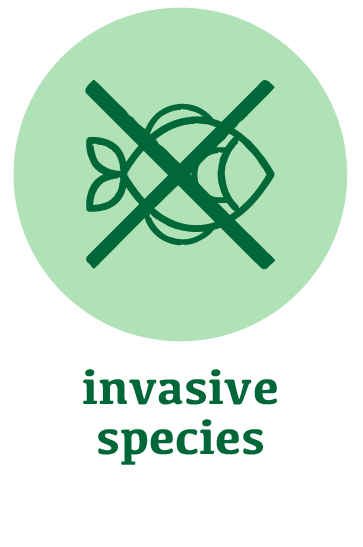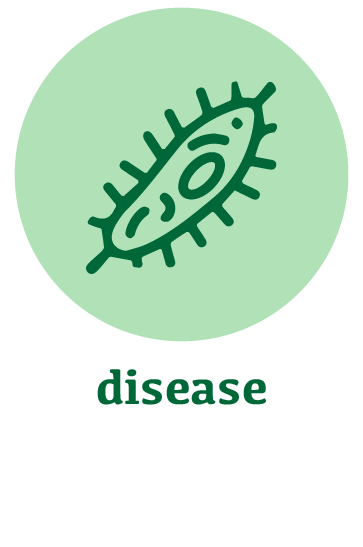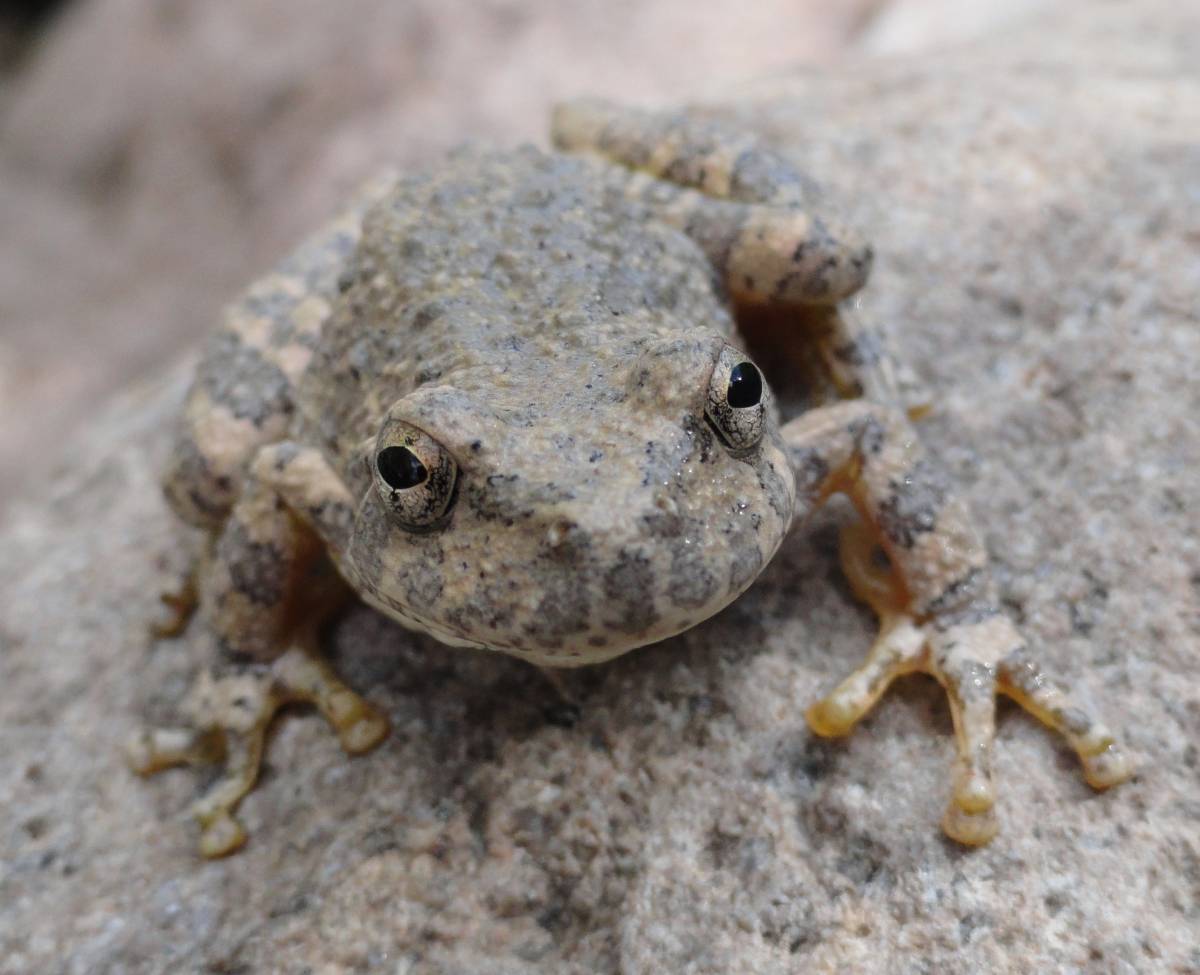Amphibians are the most endangered group of animals on the planet.
For over 50 years, researchers have been observing and documenting a global decline in amphibians. Roughly one in three species of amphibians are at risk of extinction in the near future. If this trend continues, these diverse species, as well as the critical ecological services they provide, could be lost forever.
There are six key conservation challenges associated with the widespread, ongoing decline in amphibian species. These threats can interact and compound each other with potentially devastating consequences to amphibian populations around the country.
Click on a conservation challenge below to learn more.

Habitat loss is widely believed to be the greatest threat to amphibians today, affecting nearly 4,000 species globally. Many amphibians rely on both terrestrial and aquatic habitats for various parts of their life cycles. Unfortunately, wetlands have been drained, water has been diverted, terrestrial habitat has been destroyed, and roads and development have fragmented their remaining habitat patches.

Several factors contribute to the vulnerability of amphibians to climate change. Amphibians rely on both aquatic and terrestrial systems; they breathe through their moist, sensitive skin, and they are a central link in many food chains. This makes amphibians extremely sensitive to any environmental changes, including climatic shifts. As such, they are often viewed as “canaries in the coal mine” with respect to ecological changes. Climate change will affect individual amphibian species differently, but many species and populations will be impacted by more extreme weather events, changes in water cycles, sea level rise, increasing ambient temperatures and drying habitat.

Clean water is essential to the survival of amphibians. Pesticides, some of which are comprised of toxic chemicals, generally undergo little to no evaluation for negative impacts on amphibians prior to approval for use. Unfortunately, many of these pesticides end up in waterways where amphibians live and breed. Because amphibians have highly sensitive skin relative to most other animals, they are uniquely vulnerable to harm from exposure to pesticides and other pollutants.

The global markets for frog legs as food and pet frogs and salamanders place a heavy burden on wild amphibian populations. Between 1998 and 2002, nearly 15 million wild-caught amphibians were legally imported into the United States. It is estimated that over 100 million amphibians are removed from the wild each year. Existing data shows that this level of harvest is unsustainable and is a significant contributor to amphibian declines around the world.

Humans ship hundreds of millions of animals around the world each year for the pet, food, bait, and research industries. Occasionally, animals either escape or are purposely set free in a new place where they do not belong. Other organisms are inadvertently transported to regions outside of their historic ranges. Many of these “invasive” (or non-native) species adapt to their new environments, where they reproduce and spread quickly. These species can consume and outcompete native species. Invasive species are among the most serious threats to native wildlife worldwide, as they can be incredibly difficult to eradicate once their populations become established.

Amphibian populations worldwide have experienced significant declines over the past several decades, thanks in part to the spread of disease. A key example is the lethal skin disease chytridiomycosis, which is caused by a type of chytrid fungus (Batrachochytrium dendrobatidis). As of early 2018, this deadly fungus had has been detected in at least 287 species of amphibians in 36 countries. Chytrid has led to the complete destruction of some amphibian populations, and has been linked to the extinction of over 100 species over the past 50 years.
Copyright © 2018 Amphibian Report Card. All rights reserved. Website designed and maintained by Mother, Baker, Website Maker.










